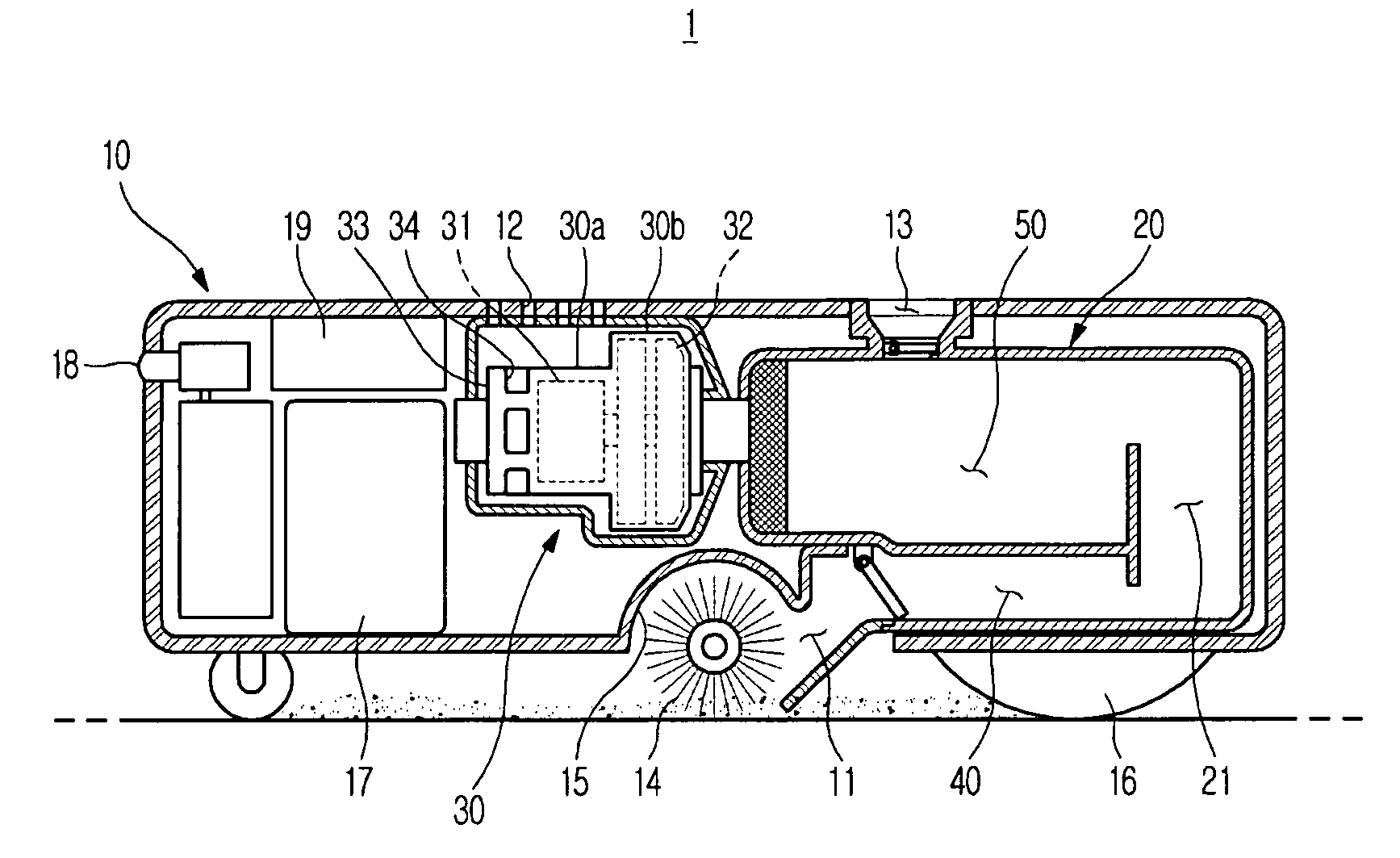Robot cleaner with improved dust collector
a robot cleaner and dust collector technology, applied in the field of robot cleaners, can solve the problems of limiting the suction force of heavy dust into the filter, the robot cleaner cannot adopt a large-size fan motor providing a high suction force, and the robot cleaner is difficult to exhibit a satisfactory cleaning performan
- Summary
- Abstract
- Description
- Claims
- Application Information
AI Technical Summary
Benefits of technology
Problems solved by technology
Method used
Image
Examples
first embodiment
[0052]FIG. 1 is a perspective view of a robot cleaner according to the present embodiments, and FIG. 2 is a sectional view illustrating the overall configuration of a robot cleaner according to a
[0053]The robot cleaner according to the first embodiment, as shown in FIGS. 1 and 2, includes a body 10 defining an outer appearance of the cleaner 1, a dust collector 20 installed in the body 10 to collect dust, scraps, etc. (hereinafter, wholly referred to as “dust”) therein, and a blower 30 to generate a suction force required to suction the dust in communication with the dust collector 20.
[0054]The body 10 defining the outer appearance is perforated, in a bottom surface thereof, with a suction hole 11 to suction dust from the floor. Also, the body 10 is perforated, in a top surface thereof, with air-discharge slots 12 to discharge air suctioned by the blower 30 to the outside of the body 10 and a dust-discharge hole 13 to discharge the dust collected in the dust collector 20 into a dock...
second embodiment
[0094]Next, a robot cleaner will be described.
[0095]In the following description, the same configurations as those of the robot cleaner according to the previously described first embodiment will be designated by the same reference numerals and a description thereof will be omitted.
[0096]The robot cleaner according to the second embodiment is approximately the same as the robot cleaner according to the first embodiment except for the configuration of a dust collector.
[0097]FIG. 6 is a sectional view illustrating the overall configuration of the robot cleaner according to the second embodiment. FIG. 7 is a perspective view illustrating a dust collector included in the robot cleaner according to the second embodiment. Also, FIG. 8 is a sectional view taken along the line A-A of FIG. 7, and FIG. 9 is a sectional view taken along the line B-B of FIG. 7.
[0098]The dust collector 60 included in the robot cleaner according to the second embodiment, as shown in FIG. 6, has an approximately ...
PUM
 Login to View More
Login to View More Abstract
Description
Claims
Application Information
 Login to View More
Login to View More - R&D
- Intellectual Property
- Life Sciences
- Materials
- Tech Scout
- Unparalleled Data Quality
- Higher Quality Content
- 60% Fewer Hallucinations
Browse by: Latest US Patents, China's latest patents, Technical Efficacy Thesaurus, Application Domain, Technology Topic, Popular Technical Reports.
© 2025 PatSnap. All rights reserved.Legal|Privacy policy|Modern Slavery Act Transparency Statement|Sitemap|About US| Contact US: help@patsnap.com



